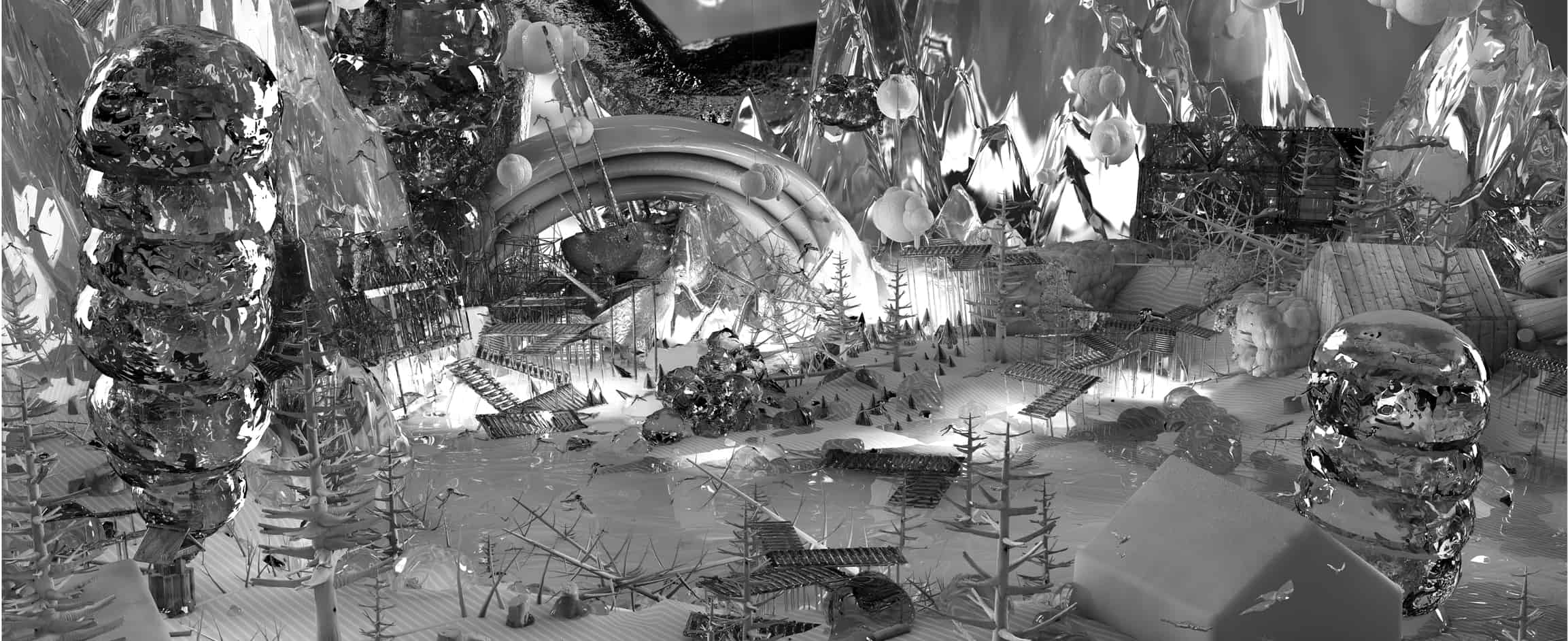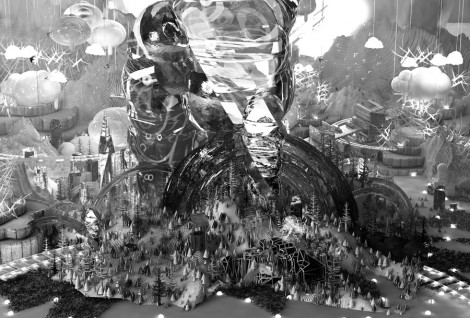At first glance, it is natural to assume that Alex McLeod’s imaginative landscapes have been constructed in a studio, painstakingly assembled with tweezers, paint, and sealant. Yet, McLeod needs only a computer and his ideas to pull together the dynamic (and at times haunting) scenes that have come to define him as an artist. Using only technology to create art, McLeod combines his digital prowess with a deep appreciation for nature.
Originally from Scarborough, McLeod studied at OCAD and first began his artistic endeavours with painting. However, he soon adopted a new way to channel his creativity; he remarks that “as soon as I could integrate software, I would. I used digital collages as preparatory works to base my paintings on. Once I got to a preparatory sketch which was refined enough, I could base work on that.” From there, software began playing an increasingly large role in his work.
McLeod’s work explores new depths in the digital medium. The incredible variation in level, colour, shadow, and texture eclipses the capabilities of two-dimensional art. “It allows me to make the work I always wanted to make, and I couldn’t make it painting. It gave me the ability to control every aspect [of the work] so what you see is what I want you to see. There’s no compromise.”
As whimsical as McLeod’s pieces appear, none of his work incorporates human figures. “Without people, viewers [are allowed] to be in control of the landscapes.” He adds that to feature people in his landscapes would inevitably offer markers of geographical whereabouts and historical periods based on their dress, activities, and dwellings. “I try to make each piece devoid of time and place. Even if buildings appear familiar, I take them out of a familiar context.”
This ambiguity is aligned with the larger message McLeod wishes to convey. “The work is about the transition between life and death, and how when we die, the nutrients in our body continue in a never-ending cycle of matter. That’s why it doesn’t make sense for the work to appear from the past or as part of the future.”
The optimism in McLeod’s work reflects a positive attitude towards the capabilities of technology. “I’ve definitely got a crush on technology,” he says good-naturedly. “I am such a nerd at heart, and I feel we’re so lucky to live in these times. Knowledge is at our fingertips all the time, and everything is so much easier for us.” Although McLeod’s art has been getting more exposure in recent years and has been displayed from Toronto to New Zealand, he remains modest. “I’m excited when anyone wants to show my work anywhere. It’s a privilege to be participating at all.”
It was the continual snowball effect of recognition that informed McLeod of his growing success. “In a lot of ways it comes down to steps. There isn’t one blockbuster event. With each step your presence grows in a small way.”
McLeod’s most recent undertaking is interactive art that allows viewers to navigate a moving landscape at their own leisure. This new endeavour immerses his audience in a world that they are able to explore and control. “If we have the potential to do this, why wouldn’t we, you know? I want to take advantage of any technology we have at our fingertips. It’s not necessarily to enhance, but just to do it for myself and others, to experience the work in a new way. This is also to inspire others to make work in ways that they thought they shouldn’t or couldn’t before. If anything, it’s to give people a sense of empowerment.” Three-dimensional works or virtual reality exhibits aren’t out of the question either, he explains. “I’d do anything.”
Amidst all the innovation McLeod explores, his inspiration originates from an ancient Iroquois burial mountain nestled between rows of bungalows in a Scarborough community. “The bodies become fuel for the next generation,” McLeod reflects. His interest in biology and natural cycles evidently has the biggest role in creating this em erging method of artistic creation. “It’s like making a circuit board out of bamboo,” McLeod says, laughing in spite of himself.



